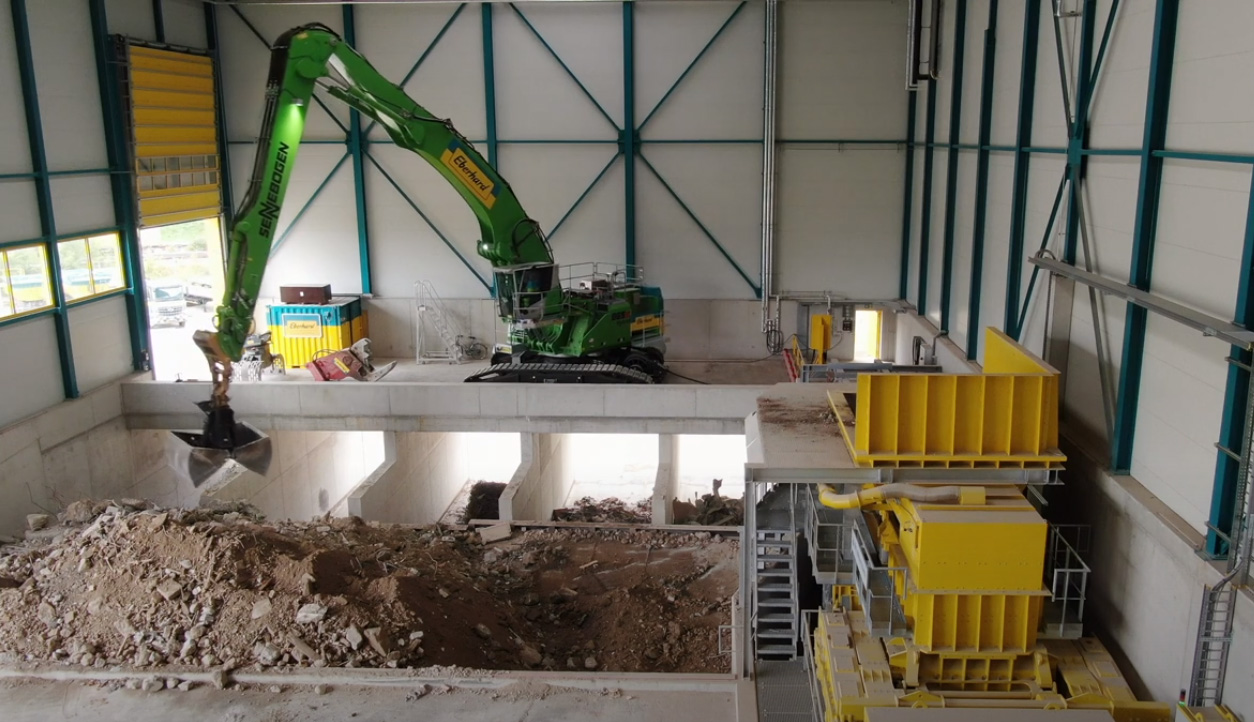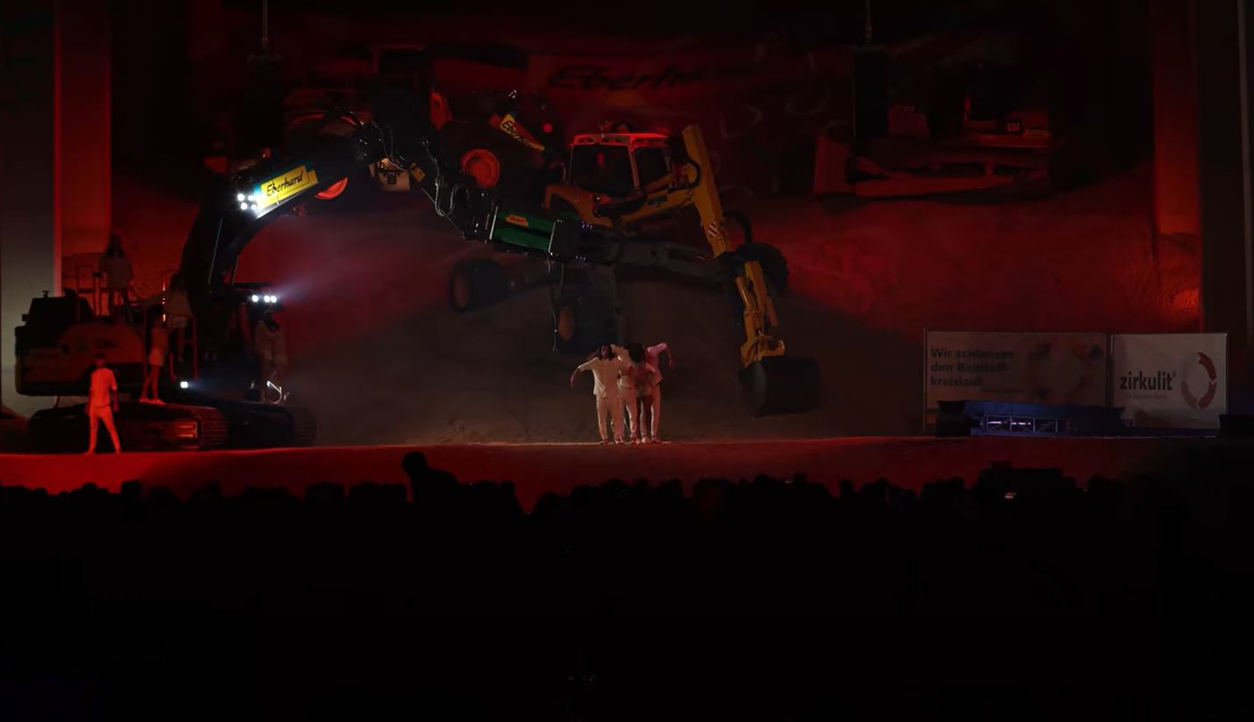#MoveTheDate
2.4
Days
As the world has urbanized, massive amounts of concrete are being used to literally build its foundations. To use construction waste as aggregate for concrete, the waste input needs to be well separated. If we use such concrete made with recycled aggregate as opposed to conventional concrete, we could immediately move Earth Overshoot Day by 2.4 days.
What is the solution?
Developing and using alternatives to conventional concrete in order to reduce the Ecological Footprint associated with construction and building materials. Concrete made from recycled materials is resource-efficient and contributes to reducing the world’s largest waste stream.
This solution improves our resource security in the cities and energy categories.
How does it #MoveTheDate?
Instead of virgin material, recycled building materials are used as aggregate for the concrete production. This reduces the carbon Footprint and avoids disturbing ecosystems by not mining fresh gravel and sand. If all the concrete in the world was replaced with this low-carbon, circular alternative, we could reduce the carbon Footprint of concrete use by 20%, moving Earth Overshoot Day by 2.4 days. Additionally, 6 billion tons of gravel and sand could be saved. This equals a fully loaded freight train with a length that would reach 32 times around the globe.
How is it scalable?
As concrete is one of the most used construction materials with a demand of 30 billion tons per year, concrete recycling could massively reduce this waste stream. Also recycling construction materials cuts down the distance that materials need to be transported and reduces the amount of raw primary material extracted from the land.
What is the solution?
Developing and using alternatives to conventional concrete in order to reduce the Ecological Footprint associated with construction and building materials. Concrete made from recycled materials is resource-efficient and contributes to reducing the world’s largest waste stream.
This solution improves our resource security in the cities and energy categories.
How does it #MoveTheDate?
Instead of virgin material, recycled building materials are used as aggregate for the concrete production. This reduces the carbon Footprint and avoids disturbing ecosystems by not mining fresh gravel and sand. If all the concrete in the world was replaced with this low-carbon, circular alternative, we could reduce the carbon Footprint of concrete use by 20%, moving Earth Overshoot Day by 2.4 days. Additionally, 6 billion tons of gravel and sand could be saved. This equals a fully loaded freight train with a length that would reach 32 times around the globe.
How is it scalable?
As concrete is one of the most used construction materials with a demand of 30 billion tons per year, concrete recycling could massively reduce this waste stream. Also recycling construction materials cuts down the distance that materials need to be transported and reduces the amount of raw primary material extracted from the land.

On September 24, 2021, Eberhard AG, a Swiss construction company, inaugurated the first ever large-scale construction waste sorting machine. It makes it possible to reuse construction waste as aggregate for new concrete of equal, if not superior, quality. This is urban mining at its best.
The sorting machinery and the aggregate deposits are housed by three large halls of over 110 meters in length. The powerful walls of the deposit buildings are built with the very concrete this waste sorting machine enables. The roof of the installation is covered with a 2 Megawatt solar panel installation [see this picture]. All the sorting equipment, from diggers to robots are electric. Check out the video to see it in action (left).
The plant recovers construction and demolition material to convert it into new, high quality circular secondary raw material for buildings. This processing makes it possible, for the first time, to circulate the mixed demolition while completely retaining its value. In the future, all demolition material will be fed back into the cycle and thus waste will be sustainably eliminated. Eberhard’s new plant includes a future-oriented waste sorting process where highly intelligent robots with artificial intelligence capture valuable high-purity secondary materials from mixed construction and demolition. The waste material is sorted on two lines of robots and six grippers. The robots pick up materials up to 12,000 times per hour and separate mineral materials from foreign impurities which could weaken new concrete.
Such recycling machines point to the future because, when measured by weight, concrete is the most widely used construction material in the world, and has become central to our urban civilization. Demolition waste from buildings is also rising and is one of the biggest waste streams worldwide. Each year, approximately 3 billion tons of CO2 can be traced back to cement production, representing 8% of global carbon emissions. Therefore, there is an urgent need to develop more sustainable alternatives.
The Swiss construction company Eberhard has not only established this groundbreaking construction waste recycling machinery. It is part of a bigger plan to boost the circularity of the sector, thereby enhancing the reuse of materials in construction. The recycling machinery is a key ingredient to their enhanced concrete, zirkulit®, a low-carbon, circular concrete that is 85% composed of recycled materials, massively reducing the need to mine primary material from gravel quarries. The use of recycled building material also reduces the waste stream. Recycling also cuts down the transport distance of heavy materials and helps maintain the integrity of natural ecosystems. Eberhard even made sure to build their facility close to train tracks in order to minimize the use of lorries
Developing new and innovative alternatives to traditional building materials and construction approaches reduces the Ecological Footprint of buildings and the construction sector. Improving the ecological performance of concrete is a key contribution to humanity’s ability to Move the Date.
There’s no benefit in waiting!
Acting now puts you at a strategic advantage in a world increasingly defined by ecological overshoot. Countless solutions exist that #MoveTheDate. They’re creative, economically viable, and ready to deploy at scale. With them, we can make ourselves more resilient and #MoveTheDate of Earth Overshoot Day. If we move the date 6 days each year, humanity can be out of overshoot before 2050.


